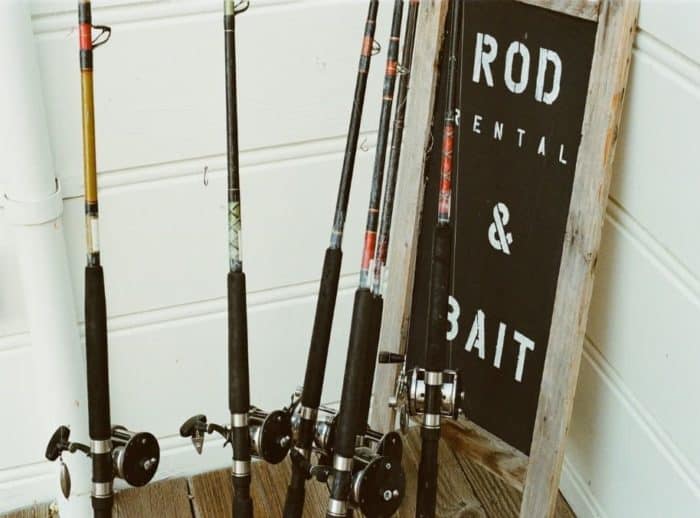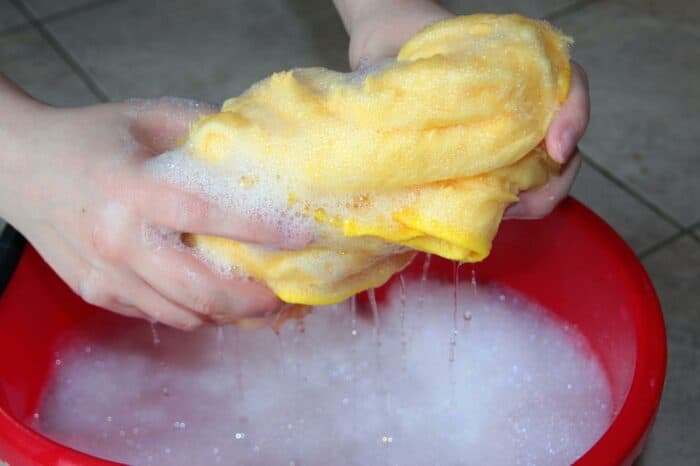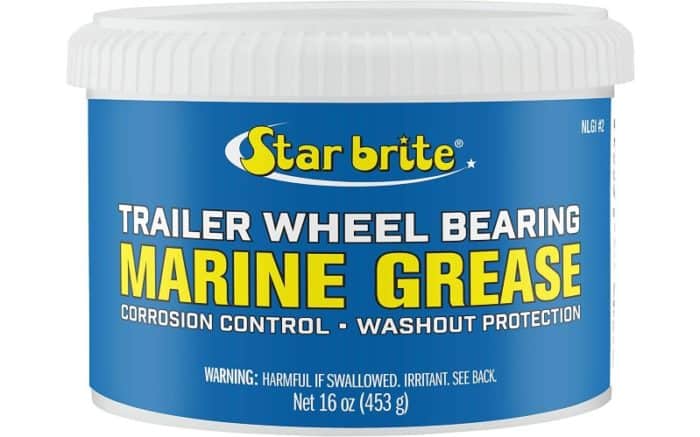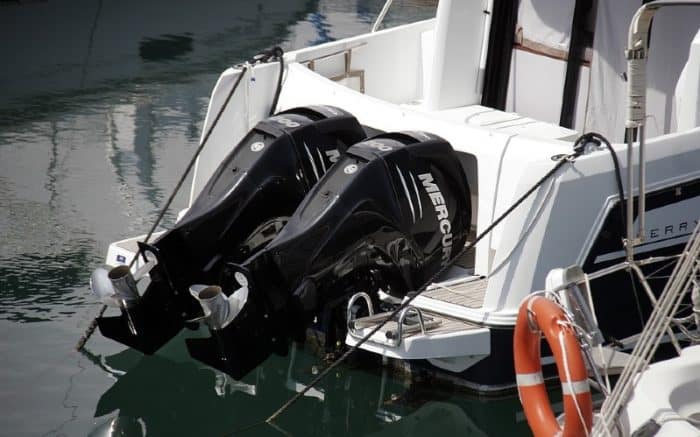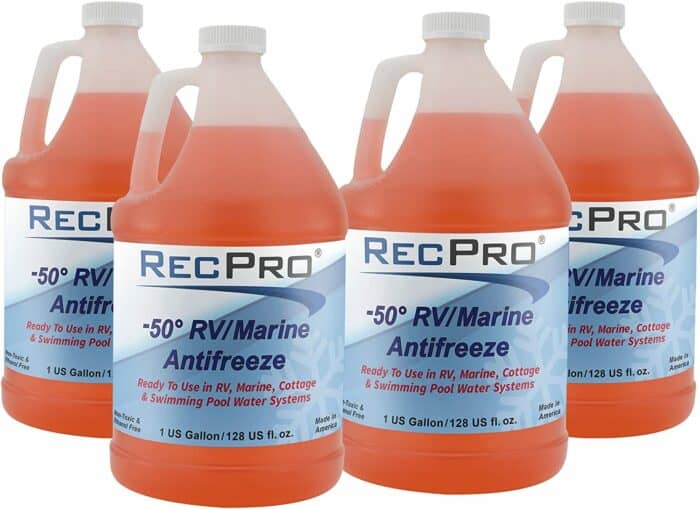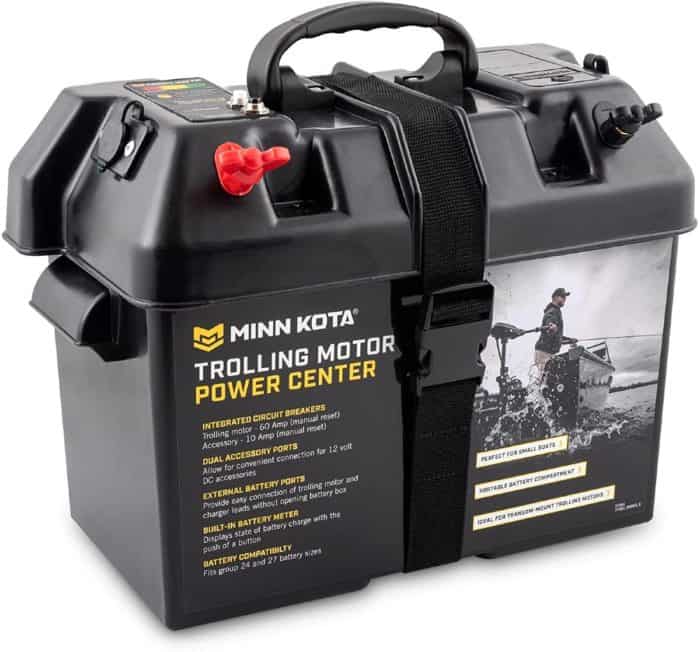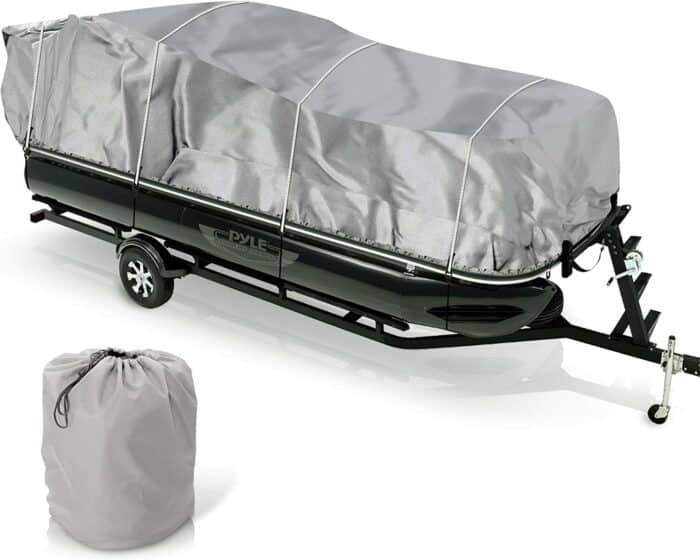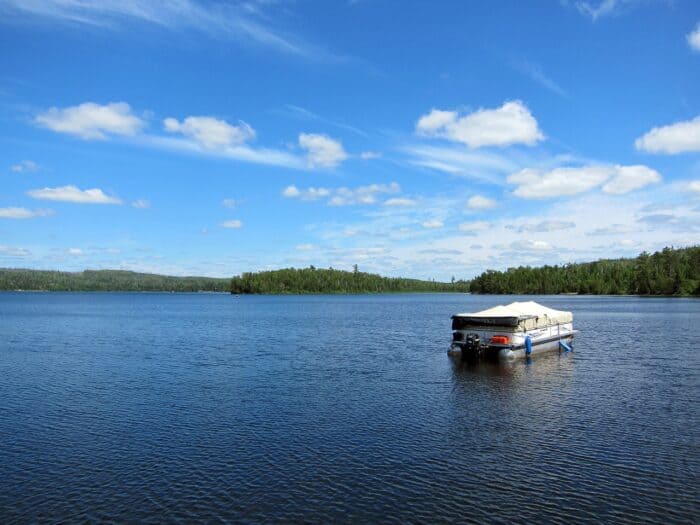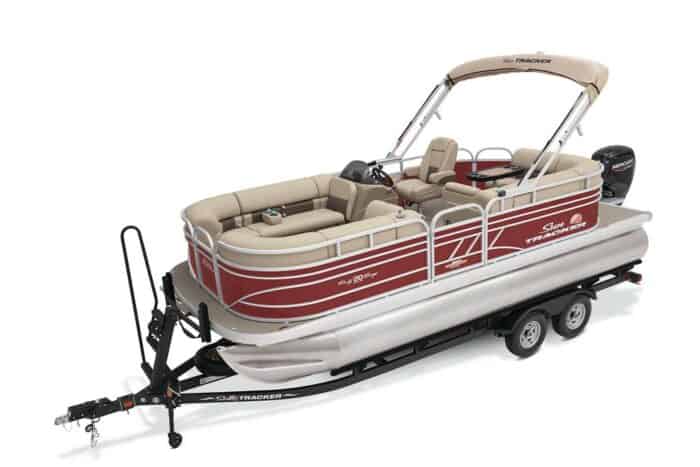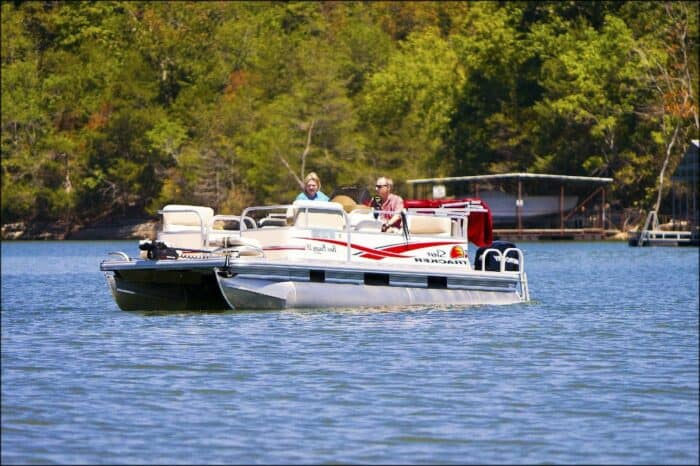How to Winterize a Pontoon Boat
There are a handful of steps you need to take to prepare your pontoon boat for winter that include prepping your engine, getting the boat clean, removing all the gear and equipment, lubricating your fittings, running antifreeze through the lines and more. Because it can be such an in-depth process you may be tempted to simply hire someone to do the job for you which is an option many boaters go with. However, if you wish to go it alone we have all the tips and steps you’ll need to get it done the right way.
Before You Start
I’ve got the basics of winterizing your pontoon lined out here but you’ll want to check your owner’s manual if you still have it handy before you begin. These general steps should suffice for any boat, but your owner’s manual may have more specific steps that can be beneficial to your particular boat. I always recommend following your manufacturer’s suggestions and tips before anyone else because they will always know best.
If you ever read conflicting information, either in this article or anywhere else on the web, your owner’s manual is always the one you should defer to.
Clear Your Gear
You should never leave anything on your boat over the course of the winter that you wouldn’t be okay never seeing again. It may be rare but there’s a chance that someone could get access to your boat and rob you so you want to make sure you take things like your radio, fishing equipment, flotation devices, depth finders and anything else that isn’t an actual part of the boat itself before you store it for the season. It’s best to bring all these items back home with you and store them in a garage or storage unit if you are able to so they can se safe until you need them again next season.
In addition to protecting it from being stolen, you’re preventing the possibility that it may end up growing mold and mildew if your boat ends up getting wet inside. That means you’ll want to get stuff off the boat that isn’t necessarily valuable as well, like towels. There’s no upside to leaving gear on your boat, so make sure you remove it and store it safely.
You can use pest repellents at this point to keep insects and rodents away from the winter. Traps are one idea but you can use natural methods as well that are less messy and less dangerous than poisons. Try using things like pure peppermint oil which mice and rats will want to avoid. Spray some around cracks and crevices where you think rodents might get in.
Clean Your Pontoon Boats
This is the first step you’ll want to take to get your boat ready for winter. Clean out the inside, wipe down surfaces, sweep and vacuum as needed to get it looking clean and acceptable to your standards. You want to make sure there are no food crumbs around that may attract bugs or rodents.
Wooden surfaces as well as carpeted ones have a chance to hold moisture. Make sure everything is as dry as possible before wintering so mold and mildew have less of a chance to form.
A thorough outside cleaning is necessary as well. You want to make sure the pontoons have been power washed and scrubbed down to get rid of any grease, mildew, algae or barnacles that may have formed on them over the boating season. Check the underside as well which may have developed some mildew and algae as well.
You can use a firm-bristled brush to get off stubborn stains but try not to scrub too hard on any painted parts, just so you don’t ruin your paint job. Try a microfiber cloth at first while you’re cleaning as that’s often good enough to get the majority of the stuff off your pontoons and hull.
Use a coating of mildew and rust protection if the boat is going to be stored in dry dock to ensure it stays pristine while it’s out of the water and prevent any additional unsightly or damaging growth from forming.
Lubricate The Fittings
You’ll need to lubricate the grease fittings according to your boat owner’s manual. You’ll find the fittings in your steering mechanism and all you probably need to do is apply a healthy coating of a good quality marine grease. This will ensure that nothing rusts out on you over the winter. Because the location of the fittings and potentially the kind of grease you need to use can vary based on the model of your boat, your owner’s manual is the best thing to check to ensure you do this part right.
If you can’t find your manual, try to look one up online or even contact the manufacturer directly. If that doesn’t work, you can always check forums online where owners of the same boat may have info, or ask an expert who winterizes boats professionally.
Prepare the Engine and Gas Tank
Your engine is going to be sitting unused for months so you need to make sure it’s in as good condition as it can be when you store it. To start, spray fogging oil into the carburetor to make sure it stays in good condition.
Pop your spark plugs out and spray some in the spark plug holes as well. Follow the directions on the fogging spray you’re using to know how to use it for sure. The fogging oil provides a protective layer to the inside of your engine which is important for the long wait it will have. Your engine oil is all going to settle over the months of winter, so this adds a protective layer until you’re ready to use the boat again.
After you fill the holes, replace the spark plugs but don’t reconnect any wires.
You want to store your pontoon boat with a fuel tank that’s filled about ¾ of the way. Do not fill it all the way! Because of the temperature changes your boat will have to endure, there will be a lot of condensation and expansion of the liquid inside. Add in the appropriate amount of fuel stabilizer and fuel additives to keep the fuel from going off over the winter.
Next, take the time to swap out your oil filters if you haven’t done so recently and also change your oil so it’ll be clean stuff over the course of the winter.
Tip: Check Your Fuel Tank and Engine Manual!
Regardless of what I’ve said here, always refer to your manual first. If your manual says anything different about how to handle the engine or the fuel tank, always follow those directions first and foremost.
Use Antifreeze
Part of preparing your engine requires making sure it doesn’t freeze up on you over the winter. Drain the coolant from your engine and then replace it with antifreeze to help preserve it. Also, make sure you use the right kind of antifreeze for a boat. Traditional antifreeze that you’re used to is probably ethylene glycol and this is what you want to avoid. If this leaks into the water it is toxic and can cause damage to fish and other marine life. You want to use propylene-glycol based antifreeze. This is much safer and less toxic overall. You still don’t want to be letting animals get exposed to it as much as possible, but it seems to be less harmful to the environment.
Some evidence also suggests that using propylene-glycol antifreeze is actually better for your boat engine as well, so it’s a win-win.
Take Care of Your Battery
If your boat is being stored out of water then you need to make sure you remove the battery. Make sure it’s fully charged and then you’ll need to keep it stored somewhere cool and dry over the course of the winter. As the winter progresses you should periodically return and keep the battery charged as well so that it doesn’t die on you.
If you live in a climate that allows you to keep the pontoon boat in the water then you won’t need to remove the battery. That said, you will still need to periodically charge it and also make sure it’s functioning.
Close Valves and Ports
Switch off any valves and seal exhaust ports and any other methods moisture or pests may use to get into the boat. If you have any holes or cracks in your tarp or cover, make sure they are patched up before installing it as well.
Cover Your Pontoon Boat
Inside or outside you’ll want to make sure you keep your boat well covered for the winter. This is extremely important to keep out the elements as well as unwelcome guests. Insects and rodents will happily make a home on your boat if you give them a chance and you don’t want that.
Shrink wrap the boat at first to keep it water tight so no rain or snow is able to get inside. This is something that you may want to leave to a professional if you’ve never done it yourself, however. It’s not as easy as grabbing some plastic wrap from the grocery store after all, but done properly it can seal your boat better than anything else and keep it safe all winter.
A more practical option for most boaters who don’t want to pay for the shrink wrap option is just covering the boat the traditional way. This needs to be done with care. If the boat isn’t covered tightly and properly, moisture will get inside. Likewise, snow and rain can build up on the cover and weigh it down. If it was not installed and secured correctly, the weight of it may collapse the cover and flood your boat which could be catastrophic.
A boat cover or even a tarp can be used but you need to make sure it’s a good fit. If your boat is being stored outdoors for the winter this is even more important. Indoors the point of the tarp is to prevent moisture, dirt and bugs or rodents from getting inside. But outside, the tarp has to be fitted and also supported in a way that will allow rain or melting snow to fall off without causing sagging.
Cover Tip: You can help secure your tarp or cover against vermin by using rodent spray designed to keep rats and mice from trying to chew through the material. This can save a lot of damage especially if you know your boat will be stored in a place that is at risk for this kind of thing.
The Bottom Line
Winterizing pontoon boats takes some time and effort to get it done properly. You need to make sure your engine and battery are ready to handle the cold weather and that you have a suitable cover to protect it from the elements as well as pests. It’s also a good opportunity to give the boat a thorough cleaning inside and out before you store it so that it will be in prime condition at the beginning of the next boating season.
Make sure you remove any valuables and seal the boat well. If you follow all the steps to the letter then, when winter is over, getting your boat reading to head out onto the water once more should be a breeze.
Categories: Pontoon Boats
